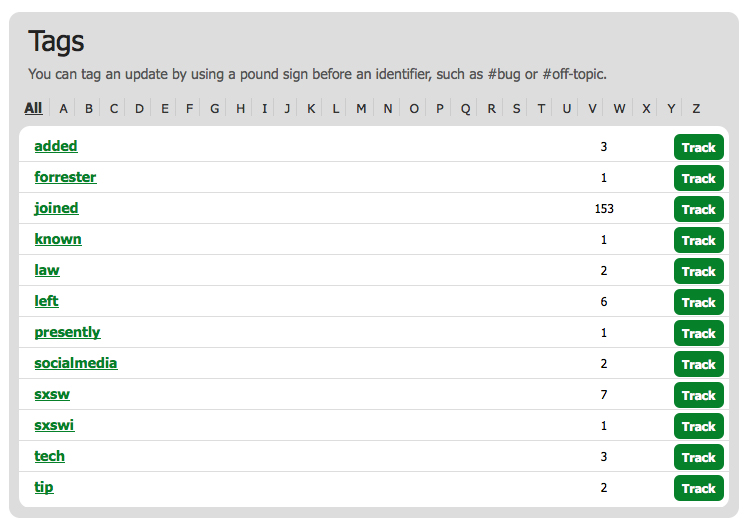On March 14 at SXSW, we launched Presently.com, designed to be the first professional microblogging environment. The idea behind Presently.com is that we wanted to bring the best of microblogging and career/professional social networking into one environment. Think of it as Twitter meets LinkedIn.
Twitter pioneered microblogging and its features, like 140-character status updates, followers/following lists, and direct messages have proven extremely popular with users, and the service is growing dramatically.
LinkedIn provides a more professional focus, but lacks social features, and therefore the true, dynamic Web 2.0 communications platform of a true social network.
Presently.com is based on Intridea’s Presently microblogging platform, which is used daily by many large corporations and government organizations. Presently extends and maintains the basic Twitter metaphor with additional features, like group messaging; the ability to embed formatted documents like MS Word, PowerPoint, Excel, video and images; message capacity beyond 140 characters without compromising user experience; and extended user profiles to help people more easily identify others with common interests.
Why Professional Microblogging?
There is no doubt that Twitter is a revolutionary communications tool. But some users, even those who limit the number of people they follow on Twitter, are finding the noise ratio to be too high. Trivial and personal communications are inevitable in any public forum, and are in fact a big part of the appeal of Twitter. With Presently.com, we set out to flip the signal-to-noise ratio from 20-80 to 80-20, so serious users spend less time sifting through trivial information.
The Power of Group Updates
In addition to public updates, and private direct messages, features found in most microblogging environments, Presently.com users can create groups and send updates to just a few people, such as the employees of a company, or members of a workgroup or industry organization.
Anyone can create a group for a specific profession, hobby, project team, or any other community of interest. Groups on Presently.com can be public, private or secret. Public groups are useful for encouraging communications and collaboration within particular communities, such as the legal profession, graphic artists, web designers, and gamers. Private groups require an invitation from a current group member, and are useful for closed communications, within, for example, a committee, a sports team, a company, a project team or workgroup, or multiple parties negotiating an agreement or planning an event. Secret groups are private groups that are not listed in the publicly viewable group directory.
Once a group is created, users can send updates to the entire group, to individuals, or to one or more members of the group. Inviting new members is easy. Users can share documents, such as MS Word, YouTube video, Adobe PDF, PowerPoint, and Excel, and can also enter formatted text, including software code, directly into an update. Presently.com maintains threads so that users can see the origin, progression and completion of a conversation, project or discussion.
Who Can Join Presently.com?
Presently.com is currently free to all users. Presently.com allows users with any email address to join and form groups of common interest. Similar services, like Yammer are built around communities based only on common email domains, such that users from a single company can form a group, but can only include members with the same email domain. (For example, you could form a Yammer group with people who have email addresses ending in @yourcompany.com, but could not add people with email addresses ending in @anothercompany.com.)
Try It Out!
Presently.com had a great reception at SXSW. We were really pleased to be able to chat in person with new friends and old. I hope you’ll check it out. I’d love it if you did your next group chat on Presently.com to see how much more seamless and enjoyable the experience is. On Presently.com, you don’t need hashtags (though you can still use them) so participants, particularly those who are less technical, won’t have to use an additional site or service to monitor the discussion. (And you won’t lose track of people who forget the hashtag or format it incorrectly.)
Speaking of hashtags, Presently.com has a unique and powerful way of dealing with tags. Once a tag is used, it is automatically added to a tag list. Users can see which tags are the most popular, can click on a tag to see all of the updates related to that tag, and can click to be alerted any time someone uses a particular tag.

If you like the idea of professional microblogging, please create a few groups in Presently.com. There are already quite a few there (many of which we created to get the ball rolling), but the site really needs to belong to users to be effective.

